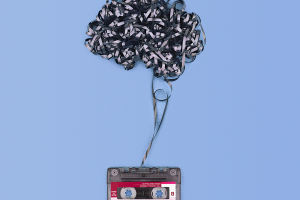Have you ever heard a violin's clear, emotional sound and felt a little spark inside? Maybe in a movie, a concert, or a quiet evening performance? Today, we’re going to explore this wonderful instrument together.
From how it’s made to how it's played, we’ll find out why the violin continues to touch people all over the world, generation after generation.
What Exactly Is a Violin?
The violin is a bowed string instrument with four strings. Among its family members—the viola, cello, and double bass—the violin is the smallest and plays the highest notes. In orchestras, it plays a key role, often leading the melody and giving energy to the entire group. Most orchestras divide violins into two sections: the first and the second violins. While the first often takes the lead with bright melodies, the second provides harmony and depth.
What makes the violin so special is not just its sound, but also its ability to express a wide range of emotions. Whether we’re happy, sad, or somewhere in between, the violin seems to know how to speak directly to the heart.
How Do We See Violins in Performances?
The violin is used in many types of performances. In a full orchestra, the lead violinist is called the concertmaster and sits closest to the conductor. This position is one of great responsibility and respect.
The violin appears in different musical forms:
- In a violin concerto, one solo violinist plays in front of an orchestra.
- In a violin sonata, the violin performs with a piano as an equal partner.
- In chamber music, like trios or quartets, the violin teams up with other string instruments for a more intimate experience.
Because of this flexibility, we see violins not only on grand stages but also in small concert rooms, schools, and even street corners.
What Is a Violin Made Of?
A good violin is made with great care. Different parts use different kinds of wood:
- The top is made from spruce, which is light and helps produce a rich sound.
- The back, sides, and neck are often made from maple, known for its strength and bright tone.
- The fingerboard is usually ebony, a very hard and smooth wood that can handle years of playing.
Even the shape and the varnish (the finish on the outside) are important. They all come together to help the violin produce its warm and singing sound.
How Much Does a Violin Cost?
Violins can be surprisingly affordable or incredibly expensive. A beginner’s violin may cost just a few hundred yuan, while rare violins made by famous craftsmen like Stradivari or Guarneri can sell for millions. Most of us will never hold a million-yuan violin, but thankfully, there are many high-quality options that are perfect for learning and performing.
Why Is It Called the “Queen of Instruments”?
People often call the violin the “queen of instruments,” and for good reason. Its sound is full of life—able to, whisper, or soar. It fits into almost every kind of music: classical, folk, pop, jazz, and more. Because it’s so expressive and loved by so many, it has become one of the most important and popular instruments in the world.
The violin doesn’t just play notes. It tells stories. It helps us feel things we sometimes can’t put into words.
Let’s Wrap It Up—What Makes the Violin So Special?
The violin captivates us not just with its beauty, but with its ability to connect people from all walks of life. It transcends cultures and time periods, telling stories that words often cannot. From a beginner’s first note to a seasoned player’s emotional performance, the violin grows with us, sharing both our struggles and triumphs.
Lykkers, have you ever been moved by the sound of a violin? Or perhaps there's a piece that speaks to you every time you hear it? Let's keep the conversation going and dive deeper into the world of this incredible instrument. Share your thoughts, and let’s explore how music brings us together!


